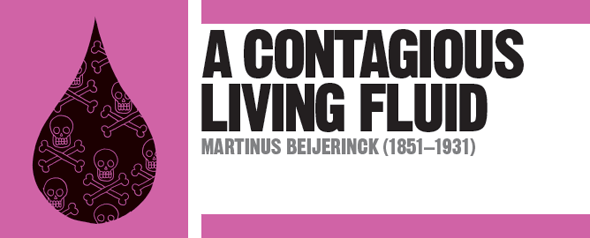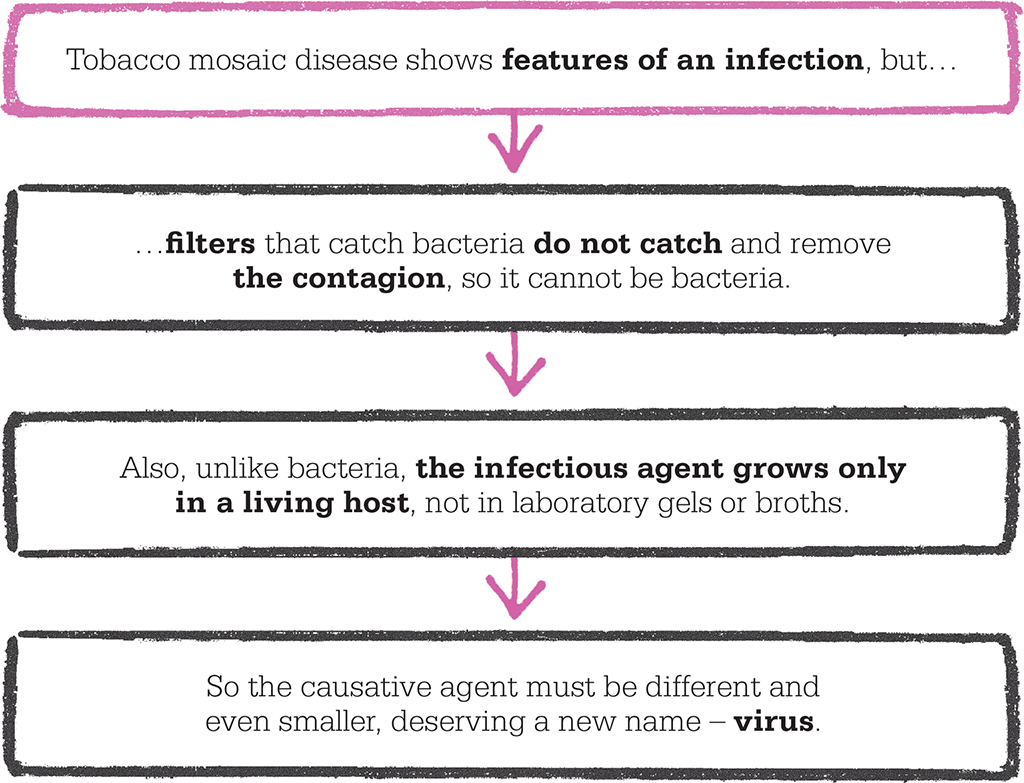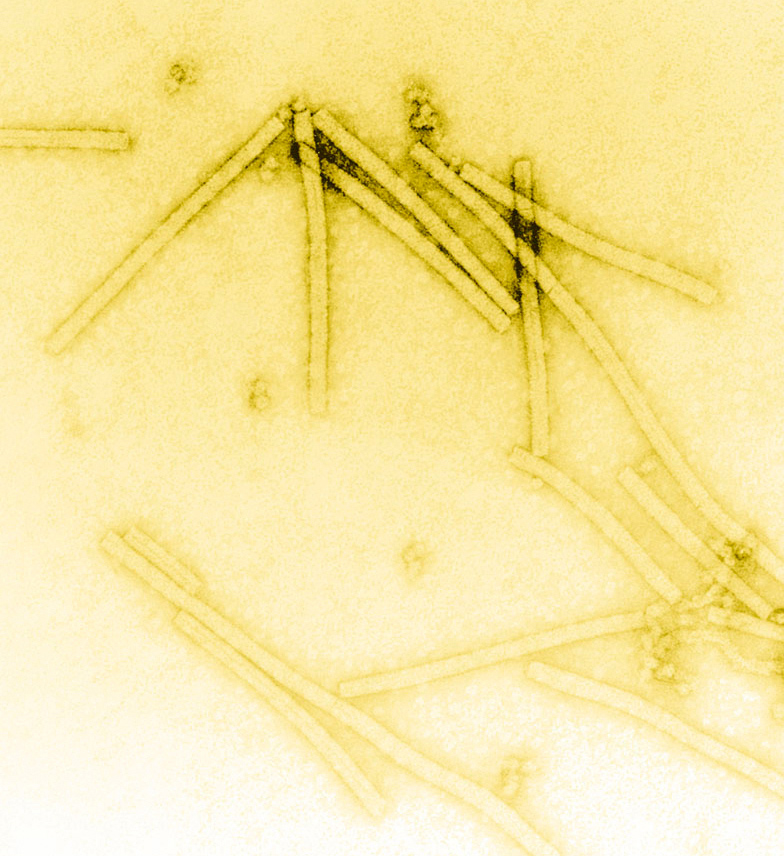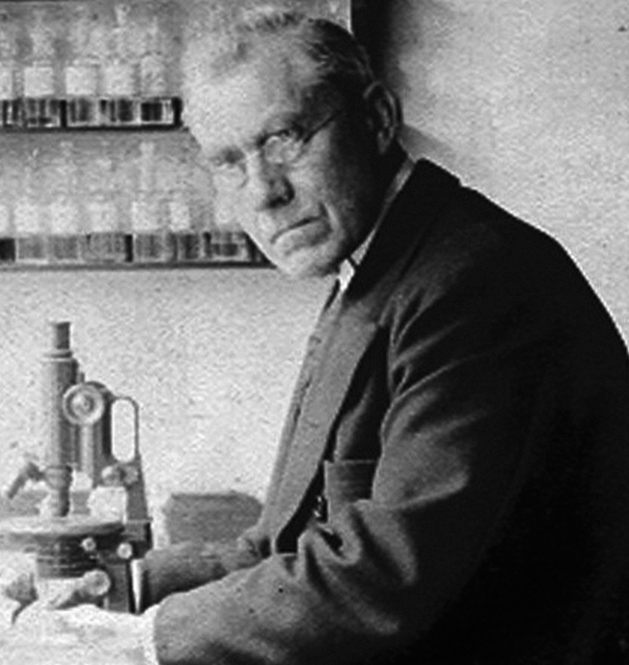
IN CONTEXT
Biology
1870s and 80s Robert Koch and others identify bacteria as the cause of diseases such as tuberculosis and cholera.
1886 German plant biologist Adolf Mayer shows tobacco mosaic disease can be transferred between plants.
1892 Dmitri Ivanovsky demonstrates that tobacco plant sap passing through the finest unglazed porcelain filters still carries infection.
1903 Ivanovsky reports light-microscope “crystal inclusions” in infected host cells, but suspects they are very small bacteria.
1935 US biochemist Wendell Stanley studies the structure of the tobacco mosaic virus, and realizes that viruses are large chemical molecules.
These days, the word “virus” is all too familiar as a medical term, and many people understand the idea that viruses are just about the smallest of the harmful agents, or germs, that cause infections in humans, other animals, plants, and fungi.
Yet at the end of the 19th century, the term virus was only just making its way into science and medicine. It was suggested in 1898 by Dutch microbiologist Martinus Beijerinck for a new category of contagious disease-causing agents. Beijerinck had a special interest in plants and a skilled talent for microscopy. He experimented with tobacco plants that were suffering from mosaic disease, a discolouring mottled effect on the leaves that was costly for the tobacco industry. His results led him to apply the term virus – already in occasional use for substances that were toxic or poisonous – to the contagious agents that caused the disease.
At the time, most of Beijerinck’s contemporaries in science and medicine were still grappling with understanding bacteria. Louis Pasteur and German physician Robert Koch had first isolated and identified them as disease-causing in the 1870s, and more were being discovered constantly.
A common method of testing for bacteria at the time was to pass liquid containing the suspected contagions through various sets of filters. One of the best known was the Chamberland filter, invented in 1884 by Pasteur’s colleague Charles Chamberland. It used minute pores in unglazed porcelain to capture particles as small as bacteria.

Too small to filter
Several researchers had suspected that there was a class of infectious agents even tinier than bacteria that could pass on disease. In 1892, Russian botanist Dmitri Ivanovsky carried out tests on tobacco mosaic disease, showing that its infection agent passed through the filters. He established that the agent in this case could not be bacteria, but did not investigate further to discover what the agent might be.
Beijerinck repeated Ivanovsky’s experiment. He, too, established that even after juice pressed from the leaves was filtered, tobacco mosaic disease was still present. Indeed, at first he thought that the cause was the fluid itself, which he called contagium vivum fluidium (contagious living fluid). He further demonstrated that the contagion carried in the fluid could not be grown in laboratory nutrient gels or broths, nor in any host organism. It had to infect its own specific living host in order to multiply and spread the disease.
Even though viruses could not be seen by light microscopes of the time, grown with the usual laboratory culture methods, or detected by any of the standard microbiological techniques, Beijerinck worked out that they really did exist. He insisted that they caused disease, propelling microbiology and medical science into a new era. It would not be until 1939, with the aid of electron microscopes, that tobacco mosaic virus became the first virus to have its photograph taken.

This electron micrograph image shows particles of the tobacco mosaic virus at 160,000x magnification. The particles have been stained to enhance their visibility.
MARTINUS BEIJERINCK

Something of a recluse, Martinus Beijerinck spent many solitary hours experimenting in the laboratory. He was born in Amsterdam in 1851, and studied chemistry and biology in Delft, graduating in 1872 from Leiden University. Focusing on soil and plant microbiology at Delft, he carried out his famous filtering experiments on the tobacco mosaic virus in the 1890s. He also studied how plants capture nitrogen from the air and incorporate it into their tissues – a kind of natural fertilizer system that enriches the soil – as well as working on plant galls, fermentation by yeasts and other microbes, the nutrition of microbes, and sulphur bacteria. By the end of his life, he was internationally recognized. The Beijerinck Virology Prizes, set up in 1965, are awarded every two years in the field of virology.
Key works
1895 On Sulphate Reduction by Spirillum desulfuricans
1898 Concerning a contagium vivum fluidium as a Cause of the Spot-disease of Tobacco Leaves
See also: Friedrich Wöhler • Louis Pasteur • Lynn Margulis • Craig Venter